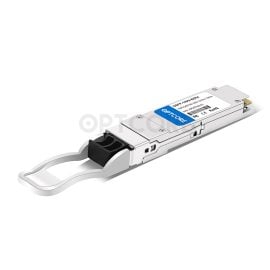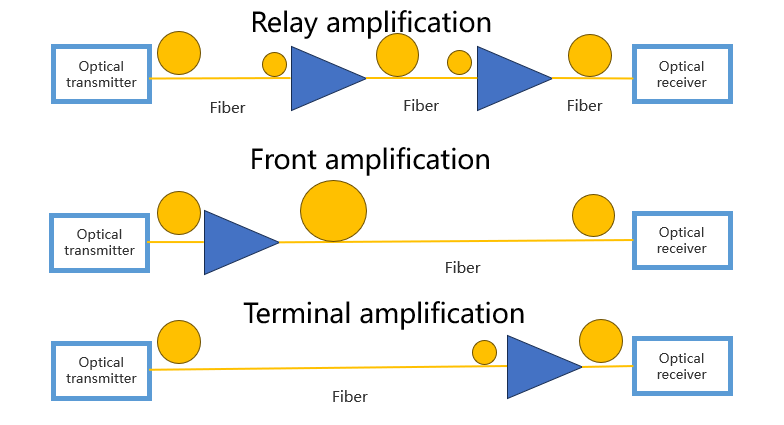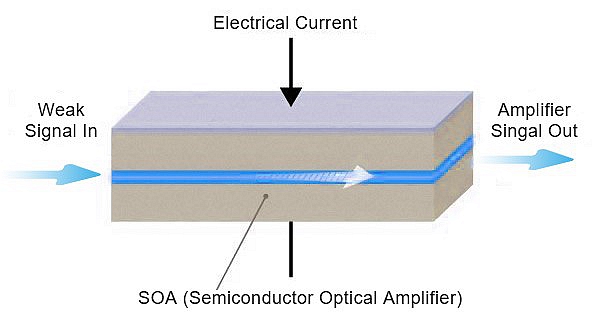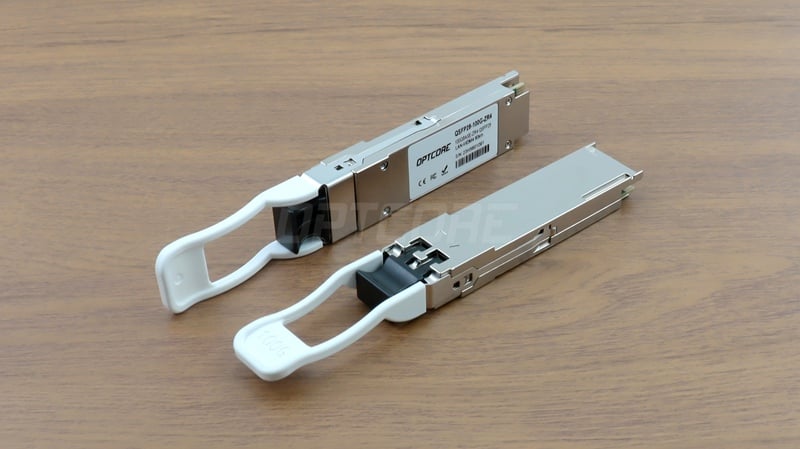Blog, Optical Transceiver
What is Semiconductor Optical Amplifier (SOA)? A Beginner’s Guide
The transmission distance and rate have increased with the continuous development of optical communication. However, the attenuation of optical signals during transmission has limited optical fiber transmission. The emergence of optical amplifiers has dramatically improved this problem by successfully amplifying optical signals. A semiconductor optical amplifier (SOA) is a type of optical amplifier.
In this article, we will provide a more detailed introduction to the SOA in the hope that it will help you understand this device.
Table of contents
- What is An Optical Amplifier?
- semiconductor Optical Amplifier for Optical Transceiver
- Fiber Amplifier
- Solid-state Laser Amplifier
- Semiconductor Optical Amplifier (SOA)
- Principle of SOA operation
- Common SOA
- Advantages of SOA
- Limitations of SOA
- Important Parameter Indicators of SOA
- Application Areas of SOA
- FAQ
- Conclusion
What is An Optical Amplifier?
An optical amplifier is a device that receives an input optical signal and produces a higher output optical signal. It is equivalent to the successful amplification of optical signals, hence the name. Optical amplifiers have greatly facilitated the development of optical networks, changing the previous dilemma of amplifying signals that could only be achieved through photoelectric and electro-optical conversion.
semiconductor Optical Amplifier for Optical Transceiver
As a critical optoelectronic device in fiber optic communication, the optical module’s primary role is to realize the photoelectric conversion.
After receiving the electrical signal at the sending end, it is converted into an optical signal after internal processing of the optical module and then transmitted through the optical fiber. Finally, the receiving end converts the optical signal into an electrical signal.
Because of the fiber optic transmission process loss, the optical module at the receiving end usually adds an optical amplifier with a pin receiver. By adding an optical amplifier, the signal at the receiver end can be fully recovered for medium to long-distance transmission.
-
 Generic Compatible 100G BiDi QSFP28 1309nm-TX/1304nm-RX 40km LC TransceiverUS$ 849.00 (Excl. VAT)
Generic Compatible 100G BiDi QSFP28 1309nm-TX/1304nm-RX 40km LC TransceiverUS$ 849.00 (Excl. VAT) -
 Generic QSFP-100G-ZR4+ Compatible 100GBASE-ZR4+ QSFP28 1310nm 100km TransceiverUS$ 1,499.00 (Excl. VAT)
Generic QSFP-100G-ZR4+ Compatible 100GBASE-ZR4+ QSFP28 1310nm 100km TransceiverUS$ 1,499.00 (Excl. VAT) -
 Generic Compatible 100GBASE-ER4 QSFP28 1310nm 40km TransceiverUS$ 799.00 (Excl. VAT)
Generic Compatible 100GBASE-ER4 QSFP28 1310nm 40km TransceiverUS$ 799.00 (Excl. VAT) -
 Generic QSFP-100G-ZR4 Compatible 100GBASE-ZR4 QSFP28 1310nm 80km TransceiverUS$ 1,499.00 (Excl. VAT)
Generic QSFP-100G-ZR4 Compatible 100GBASE-ZR4 QSFP28 1310nm 80km TransceiverUS$ 1,499.00 (Excl. VAT)
In most cases, the Semiconductor Optical Amplifier (SOA) is used in 100G and 400G long-distance transceivers. Common examples include 100GBASE-ER4, 100GBASE-ZR4, 100GBASE-ZR4+, as well as 400G-DR4, 400G-FR4, 400G-LR4.
With the SOA+PIN in the receiver, the transceiver can reach a longer distance than the one without a semiconductor optical amplifier. In other words, the SOA enhances the transceivers’ sensitivity and finally provides an extended transmission distance.
Fiber Amplifier
Classification by amplification mechanism has several types.
Doped fiber amplifier
Doped optical fibers are formed by doping rare earth elements, such as erbium, praseodymium, thulium, etc., into the core of the optical fiber. The doped optical fiber is used as a gain medium to amplify the optical signal by using its excited radiation effect with the optical signal.
- Erbium-doped fiber amplifier(EDFA): It is one of the most widely used fiber amplifiers, with the advantages of high gain, low noise, high output power, stable gain characteristics, etc. It is commonly used in long-distance backbone networks, metropolitan areas, and cable TV.
- Praseodymium-doped fiber amplifier (PDFA): Working in the 1.31μm band, it is of great significance for upgrading and capacity expansion of the existing optical communication lines. However, the problems of low pumping efficiency, unstable working performance, and temperature-sensitive gain remain and have not yet been efficient.
Nonlinear fiber amplifier
Using optical fibers’ third-order nonlinear optical effect to achieve optical signal amplification.
- Fiber Raman Amplifier (FRA): based on the excited Raman scattering effect (SRS) mechanism to achieve optical signal amplification. This type of fiber optic amplifier has an adjustable gain wavelength and, therefore, flexible bandwidth design. A low-noise figure also characterizes it.
- Fibre Brillouin Amplifier (FBA): This uses the excited Brillouin scattering effect (SBS) to achieve optical signal amplification. The BRA gain bandwidth is relatively narrow. The Brillouin frequency shift is related to the material, temperature, strain, and other factors of the optical fiber, so it needs to be accurately controlled and compensated for these factors in practical applications. Currently, the application is relatively small.
Relay amplification
Used to compensate for the loss of optical signals in the optical fiber transmission process, to extend the transmission distance of the optical communication system. so that the optical signals can maintain sufficient intensity over a longer distance for reliable communication, usually using high-gain, low-noise fiber-optic amplifiers, such as the EDFA and so on.
Pre-amplification
Located at the front end of the optical receiver, it is mainly used to improve the receiver’s sensitivity. Then, the received weak optical signals are amplified for subsequent signal processing and detection. It requires a fiber-optic amplifier with low noise and high gain-bandwidth product. This ensures the adequate amplification of weak signals and the minimum impact on the quality of the signals.
Power amplification
generally located in the optical transmitter’s output, it increases the transmission power and coverage of optical signals. So that they can be transmitted over longer distances in the optical fiber or distributed to more user terminals. This process requires high-output power and high-efficiency fiber optic amplifiers, such as the EDFA.

Solid-state Laser Amplifier
Using a solid laser as an amplifying medium has many main features, including high output power, a wide range of wavelengths, good beam quality, etc. It is mainly used in scientific research, industrial manufacturing, and other fields, such as laser cutting, laser marking, laser welding, etc.
Semiconductor Optical Amplifier (SOA)

Semiconductor Optical Amplifier (SOA) or Semiconductor Laser Amplifier (SLA). A Semiconductor Optical Amplifier is a device that uses semiconductor materials to amplify optical signals. The input optical signal travels through a narrow path in the semiconductor, where a series of interactions occur (described in more detail in the following subsection on how the SOA works). This results in the amplification of the output optical signal.
Principle of SOA operation

The operating principle of semiconductor optical amplifiers is mainly based on stimulated emission. An external pumping source provides energy to jump the electrons to a higher energy level. At this point, when the input light signal passes through, these electrons interact with these incident photons. The electrons are then excited to a lower energy level and emit photons of the same frequency as the incident photons, thus amplifying the optical signal.
Common SOA
- Tapered Amplifiers: Typically, SOAs have limited output power. A particular type of semiconductor optical amplifier, the cone amplifier, is made to produce high output power.
- Vertical-cavity SOA (VSOA): This is the latest type of SOA, featuring a small size, low power consumption, and low noise.
- F-P Semiconductor Laser Amplifier (FPA): A conventional semiconductor laser is used as an optical amplifier with a structure similar to that of a semiconductor laser.
- Anti-Reflection Film SOA (ARFSA): An anti-reflection film is coated on both end surfaces of an F-P laser to eliminate reflections at both ends. The aim is to achieve wide bandwidth, high output, and low noise performance.
Advantages of SOA
- Wide bandwidth: SOAs can operate over a wide range of wavelengths, which makes them suitable for multi-wavelength communication systems.
- High gain: SOAs can provide optical gain of up to 30dB or more.
- Fast Response: SOA’s response time is speedy, typically at the pico- to nanosecond level, making them suitable for high-speed optical communication systems.
- Bi-directional amplification: SOAs can amplify both forward and reverse optical signals, a feature that can be very useful in specific applications.
- Compact size: The relatively small size and weight make it easy to integrate into optoelectronic devices such as optical modules.
- Low power consumption: consumes relatively little energy during operation, helping to reduce the overall energy consumption of the device.
- Broad wavelength range: The operating wavelength can cover the 1.3~1.6μm band and simultaneously operate in the 1310nm and 1550nm wavelength windows. This cannot be achieved by Erbium-Doped Fibre Amplifiers (EDFA) or Praseodymium-Doped Fibre Amplifiers (PDFA).
Limitations of SOA
- High noise levels: SOAs have high noise levels, which may limit their use in some demanding applications.
- Non-linear effects: The electro-optical properties of semiconductor materials and photon interactions can lead to inherent non-linear effects, which cause signal distortion and aberrations. These effects limit the amplifier’s range of amplification and power dynamics and adversely affect the quality of optical signal transmission.
- Gain saturation: when the input optical power increases to a certain extent, the SOA gain will tend to saturation, resulting in a limited amplification effect.
- Polarisation sensitivity: SOAs are very sensitive to polarisation, which can lead to degradation of signal quality.
- Limited output power: The output power of semiconductor optical amplifiers typically ranges from tens of milliwatts (mW) to hundreds of milliwatts (mW). Typical SOAs have an output power of 10 mW, so some SOAs have been specially designed to increase output power.
- Reliability and lifetime: Temperature fluctuations significantly affect the lifetime of semiconductor optical amplifiers. Experiments show that by adjusting the operating temperature, the output power can be controlled, and at lower temperatures, the amplifier can maintain stable operation for a long time.
- Sensitive to temperature fluctuations: The semiconductor material is susceptible to ambient temperature changes, and its optical properties will change with the temperature change. And this will lead to unstable performance and output parameters of the amplifier.
- Coupling loss: the coupling loss between the SOA and the optical fiber may be significant, affecting the transmission efficiency of the optical signal.
Important Parameter Indicators of SOA
- Gain: It refers to the degree of amplification of the SOA on the optical signal, quantified as the ratio of output power to input power (in dB). The larger the gain, the stronger the optical signal output.
- Gain Bandwidth: The range of gain provided by the SOA in different wavelength ranges, usually expressed in nm. A wide gain bandwidth helps to cover a broader range of optical communication bands.
- Saturated Output Power (PSAT) refers to the SOA’s power level when it reaches its maximum output power, usually expressed in dBm. High saturated output power helps improve the transmission quality of optical signals.
- Noise Figure (NF): is the unwanted signal generated within the signal bandwidth, resulting from physical processing in the amplifier. The effect of noise is measured using a metric called the noise figure, usually about 5 dB.
- Polarisation Dependent Gain (PDG): The degree to which the gain of an amplifier varies with the polarisation state of the input optical signal, usually expressed in decibels (dB). Smaller PDG means the amplifier has a more consistent amplification effect on optical signals of different polarisation states. Smaller PDG can better adapt to the input signals of various polarisation states and improve the stability and performance of the system. Smaller PDG can avoid signal distortion or gain fluctuation due to changes in polarisation states.
An ideal SOA should have high saturated output power, high gain, wide gain bandwidth, low noise figure, and small polarisation-dependent gain.
However, due to the physical constraints of various processes occurring within it, making an ideal SOA optical amplifier is still limited and challenging.
Application Areas of SOA

- Optical communication: SOA improves signal transmission distance, enables optical signal routing and switching, and provides high-quality optical signals. It is used as preamplifiers, post-amplifiers, and built-in amplifiers in fiber-optic communication systems. It is mainly used in dense wavelength division multiplexing (DWDM) systems that support multi-wavelength communications.
- Fibre optic sensing: SOA is used in fiber optic sensing systems, such as BOTDR systems, for applications such as temperature strain detection.
- Optical signal processing: SOA can be used in all-optical logic operation, optical switching, signal regeneration, and pattern recognition with non-linear effects.
- Medical imaging: SOA is also widely used in ophthalmic imaging and ultrasound probe front-end signal chains.
- Quantum communications: In quantum critical distribution systems, SOA is used to amplify weak quantum signals and enhance the channel’s security and reliability.
FAQ
Q. What is a semiconductor optical amplifier?
A. An SOA (semiconductor optical amplifier) is a semiconductor device that amplifies optical signals using a semiconductor as the gain medium. These amplifiers are electrically pumping, and electron-hole complexes occur, increasing the incident light through stimulated emission.
Q. What are the future trends of SOA?
A. As optical communication technology develops, SOAs’ performance will improve. And their size will continue shrinking and expanding into new application areas. At the same time, manufacturers of future SOAs will continue to research ways to increase gain, reduce noise, and increase saturated output power.
Q. What is the noise figure of a SOA in general?
A. The noise figure of semiconductor optical amplifiers is generally between 6 dB and 10 dB.
Q. What is the choice between a SOA and EDFA?
A. The choice of SOA or EDFA depends mainly on the specific application requirements and budget. SOA is better when an optical signal source is needed for short-distance transmission, sensing, and other easy-to-integrate applications.
If effectively amplifying optical signals in long-distance, multi-channel transmission, large-capacity, and polarisation-insensitive optical communication systems is necessary to ensure high-quality transmission, then EDFA is more appropriate.
Conclusion
This post introduces the concept of optical amplifiers (SOAs) and their classification. As optical signal amplifiers, SOAs are essential in modern optical communication. I believe that SOAs will be further improved and integrated into other fields to benefit society better.
Reference
- https://www.rp-photonics.com
Read more:
- SFP+, SFP28, QSFP+, QSFP28, QSFP56, QSFP-DD, QSFP112 vs OSFP, What are the differences?
- SFP28 vs SFP+ Transceiver, What is the Difference?
- Understanding PAM4 Signaling: A Beginner Guide







